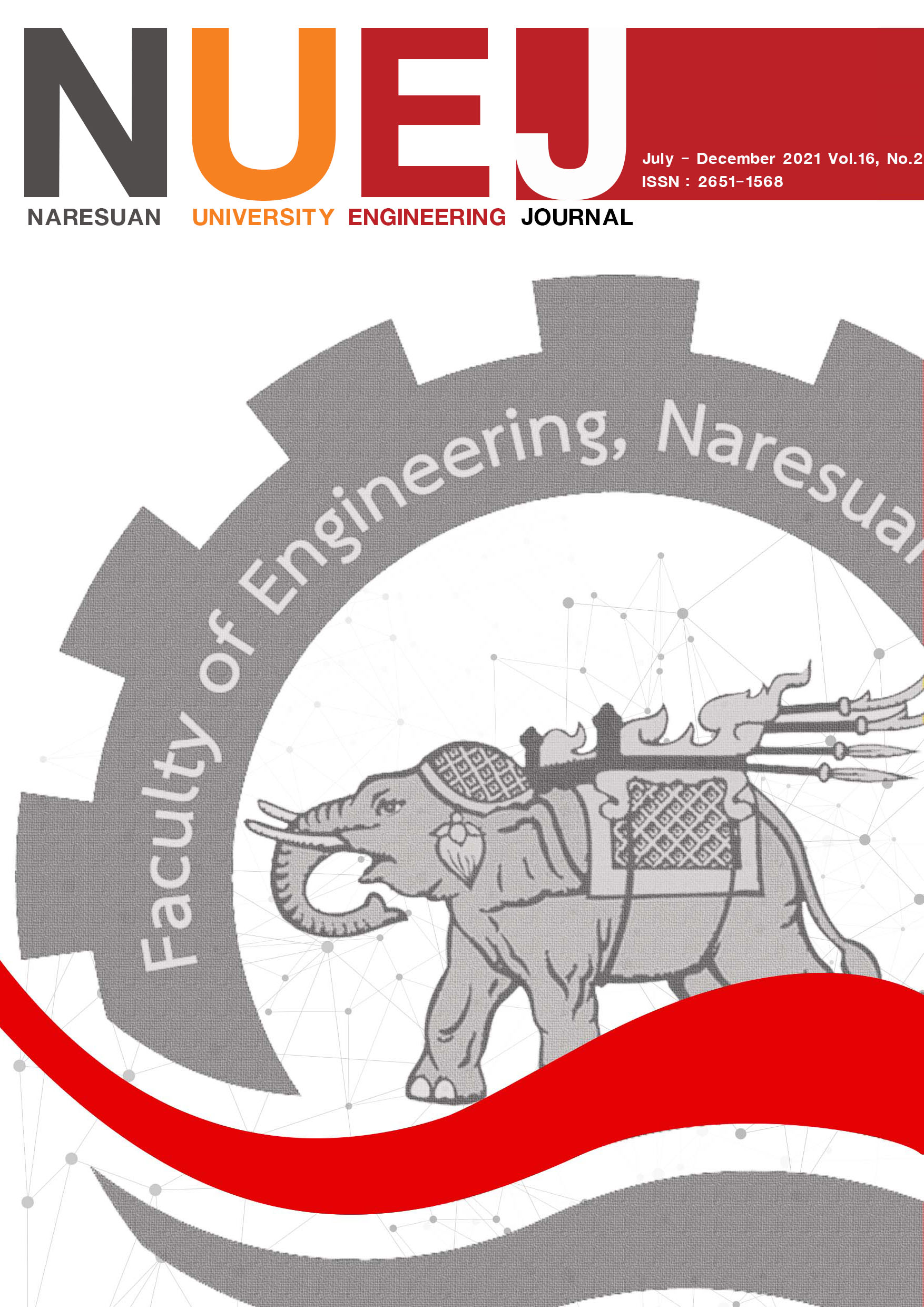Factors and Performance of Material Carbonation Resistance to Concrete Case study : Nakhon Pathom Province
Main Article Content
Abstract
This study was aimed to study of factors and performance of material resistance on carbonation of concrete in real environment of Nakhon Pathom Province. The water binder ratios were 0.45 and 0.55. Using paint and plastering mortar on carbonation resistance of concrete. The results showed that the carbonation depth of paint concrete and plastering mortar concrete was lesser than that of bare concrete. While, the carbonation coefficient was then compared to that of bare concrete. The experimental results indicate that carbonation coefficient of paint concrete and plastering mortar concrete could be reduced by 75% and 60%. After that the data were analyzed for mathematical model. Make known , and . Finally, the result can be used in the design, planning and maintenance of reinforced concrete structures faced by the carbonation real environment of Nakhon Pathom Province.
Article Details

This work is licensed under a Creative Commons Attribution-NonCommercial-NoDerivatives 4.0 International License.
References
American Society for Testing and Materials. (2004). Standard Practice for Petrographic Examination of Hardened Concrete. ASTM C 856: Annual Book of ASTM Standards, United States of America.
Cengiz, D. A. (2003). Accelerated carbonation and testing of concrete made with fly ash. Construction and Building Materials, 17(3), 147–152.
Department of Highways. (2017, February 22). Traffic Volume. https://www.data.go.th/dataset/item_4be8c846-a4db-4ec4-99dd-59688b9e0dea (in Thai)
Fattuhi, N.I. (1986). Carbonation of concrete as affected by mix constituents and initial water curing period. Materiaux et Constructions, 19(2), 131-136.
Khunthongkeaw, j., Tangtermsirikul, S., & Leelawat, T. (2006). A study on carbonation depth prediction for fly ash concrete. Construction and Building Materials, 20(9), 744-753.
Miguel, A. S. & Cesar, D. O. (2000). Carbonation resistance of one industrial mortar used as a concrete coating. Building and Environment, 36(8), 949-953.
RILEM Committee CPC-18. (1988). Measurement of hardened concrete carbonation depth. Material and Structure, 21(126), 453-458.
Roy, S.K., Poh, K.B., & Northwood, D.O. (1996). Effect of plastering on the carbonation of a 19-year-old reinforced concrete building. Construction and Building Materials, 10(4), 267-272.
Roy, S.K., Poh, K.B., & Northwood, D.O. (1999). Durability of concrete accelerated carbonation and weathering studies. Building and Environment, 34(5), 597-606
Warinlai, B., & Krammart, P. (2014). A study of carbonation depth of concrete in real environment of Nakhon Pathom Province. The 10th Annual Concrete Conference, Thailand Concrete Association, (pp. mat 313-319). (in Thai)
Warinlai, B. & Krammart, P. (2017) Basic properties and carbonation of concrete replaced with different binders. SWU Engineering Journal, 13(1), 27-38. (in Thai)


